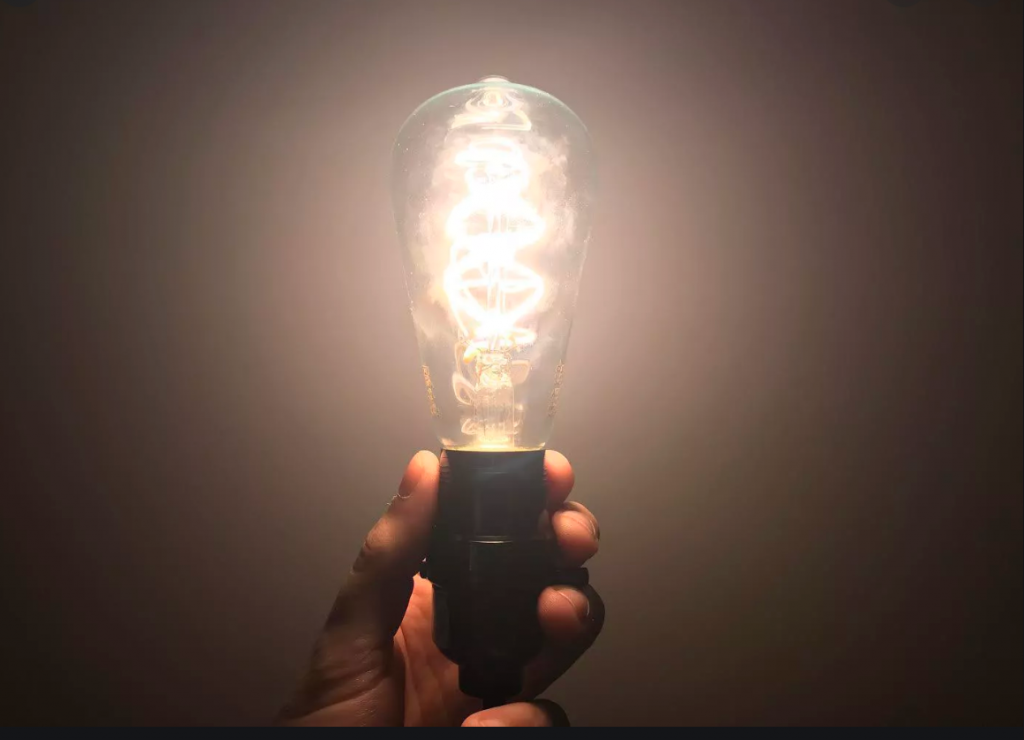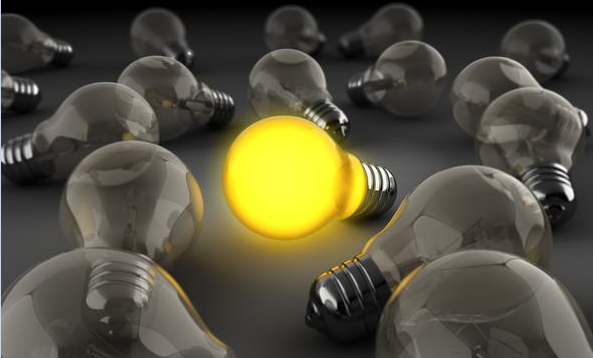1. Overview
In the field of traditional lighting, the concept and definition of lamps and luminaires are clear. Lamps and fixtures have their own applicable product standards, supporting technical standards and application standards to regulate their product quality and safe use, which well solves the matching and replacement of lamps and fixtures. Lamps from any manufacturer can be interchanged with fixtures from any manufacturer as long as they meet the relevant standards.
However, after LED lighting fixtures (temporarily referred to as LED lighting fixtures until their attributes and definitions are not clarified, the same below) have increasingly entered the field of traditional lighting, some seemingly simple problems have become confusing.
Due to the special optical characteristics and structure of LED lighting fixtures, some LED lighting fixtures have the typical characteristics of “lamps”, while some LED lighting fixtures have the typical characteristics of “fixtures”. There are also some LED lighting fixtures that have the characteristics of both “lamps” and “fixtures”.
Before the distinction and connection of these characteristics are clarified, it is difficult to determine whether some definitions, terms, technical parameters and product quality requirements of “lamps” and “fixtures” in the traditional lighting field are generally applicable to various types of LED lighting fixtures. .
In some national standards, industry standards, related publications, and magazine documents on LED lighting that have been issued so far, there are quite a few inconsistencies or contradictions in some definitions, terms, and technical parameters.
By discussing a seemingly simple question—whether LED lighting fixtures are “lamps” or “fixtures”, we seek to clarify the definitions of different types of LED lighting fixtures and their corresponding product quality characteristics, and how to regulate different Type LED lighting fixtures to make some suggestions for improvement.
2. “Light” and “Fixtures” in the Field of Traditional Lighting
Before discussing the difference and connection between the technical characteristics of LED lighting fixtures and the “Light” and “Fixtures” in the traditional lighting field, it is necessary to review the “Light” and “Fixtures” in the traditional lighting field.
The so-called “lamp” (or light bulb) is usually a common name for all types of electric light sources. It can sometimes represent a certain type of electric light source, such as incandescent lamps, low-pressure discharge lamps, high-intensity discharge lamps and so on.
Almost all “lamps” have two characteristics in common. First, they all have standardized lamp caps, which are electrically connected through standardized lamp sockets. Since the lamp holder and lamp holder are standardized, lamps of the same type that meet the standard requirements can be interchanged. Second, except for some lamps specially made to meet special requirements, the emitted light of most lamps is uniformly and symmetrically distributed along the space.
In the 1980s, due to the successful use of trichromatic phosphors in the lighting field, the compactness of tubular fluorescent lamps became possible. As a result, a new light source (mainly refers to the structure) – self-ballasted fluorescent lamps. In its product standard, it is defined as: that is, a lamp that contains a lamp cap, a light source and the necessary devices to start the lamp and maintain a stable ignition point. They are not removable without damaging the lamps.
In the field of traditional lighting, almost all electric light sources that have entered the market and become consumer products, regardless of the type, are regulated by relevant national standards and industry standards. As long as different manufacturers produce according to the same product standards and the products meet the requirements of relevant product standards, although there will be differences in quality, there is no problem with interchangeability.
3. LED Lighting
In recent years, LED lighting fixtures have been widely used in the traditional lighting field, and LEDs can basically be seen in various lighting occasions. Due to the particularity of its lighting function and structure and the rapid development of LED device technology, it is difficult to form a unified product standard within a certain period of time.
What standard to refer to or how to formulate applicable product standards to regulate various LED lighting fixtures is a problem that plagues the industry, making it difficult for some so-called standards to be implemented. Despite the introduction of a number of standards, the industry chaos is not over.
We can refer to the difference and connection between lamps and lamps in the traditional lighting field as mentioned above. First, figure out the “simple” question of whether LED lighting fixtures are “lamps” or “Fixtures”, and clarify the correct definitions and categories of various LED lighting fixtures. The latter problem can be solved.
1), LED lighting fixtures with “light” characteristics
Taking the double-ended LED fluorescent lamps that have begun to enter indoor lighting as an example, the development direction of double-ended LED fluorescent lamps is to replace the traditional double-ended fluorescent lamps (T8, T5). Its shape, dimensions, lamp holder type, etc. are the same as those of double-ended fluorescent lamps (T8, T5), and the correlated color temperature (adjustable) and general color rendering index are similar to those of double-ended fluorescent lamps (T8, T5). Generally divided into built-in power supply type or external power supply type.
No matter what type, it can be used in existing lamps instead of double-ended fluorescent lamps by simply changing the circuit connection method in the existing lamps. This is a typical lamp, so it is appropriate to define it as a double-capped LED fluorescent lamp.
Some specialities of double-ended LED fluorescent lamps: The electrical connection method of the lamp head pins and lamp sockets is different from that of double-ended fluorescent lamps. The power supply is built-in and some metal shells are involved in heat dissipation. The safety requirements standard for double-ended LED fluorescent lamps can be formed by making special provisions for this.
Some other specialities of double-ended LED fluorescent lamps: Determined by the light characteristics of LEDs themselves, the emitted light of double-ended LED fluorescent lamps is no longer distributed uniformly and symmetrically in space. The performance requirements standard for double-ended LED fluorescent lamps can be formed by making some special provisions in reference to the performance requirements standards for double-ended fluorescent lamps and the measurement methods of related parameters.
4. Recommendations
1), safety extra low voltage
Safety extra-low voltage is an important basis for the classification of fixtures according to the type of protection against electric shock. Defined in GB 7000.1: In a circuit isolated from the power supply by a safety isolation transformer or converter with a separate winding, between conductors or between any conductors and ground, the value of the AC effective voltage does not exceed 50V .
Note 1: DC voltage values are under consideration,
Note 2: Assuming that any transformer or converter is operating at its rated supply voltage, either at full load or no load, this voltage limit should not be exceeded.
Unlike traditional fixtures that use separate winding safety isolation transformers or converters to isolate circuits from the power supply, in high-power LED lighting fixtures, isolated driving power is basically used. The rated power supply voltage of the input terminal of this isolated drive power supply is usually AC 110V~220V, while the output terminal is usually DC, and the highest is 48V.
As mentioned above, the DC voltage value is under consideration. If the relevant standards for LED lighting appliances do not make special provisions, how should LED lighting appliances be classified according to the type of protection against electric shock? Although the DC voltage value is under consideration in GB 7000.1, for high-power LEDs The DC voltage inside the lighting fixture is as high as 100V. Due to the need for heat dissipation, the shell is mostly made of metal materials. What kind of anti-shock guarantee measures should be taken to ensure safety?
2), insulation resistance and electrical strength
GB 7000.1 regulations on insulation resistance and electrical strength, especially whether the regulations on electrical strength are applicable to LED lighting fixtures, should also be studied. Should the driving power supply and light source (LED) combination be tested separately or in combination? Can the test voltage be applied between the live parts of the LED lighting fixtures with different polarities according to GB 7000.1? What if there is an electrolytic capacitor in between?
3), durability test and thermal test
What about the durability test and thermal test items in GB 7000.1 for LED lighting fixtures? In this chapter, only the corresponding test conditions and parameters are specified for tungsten incandescent lamps and gas discharge lamps.
For LED lighting fixtures whose lighting principle and working circuit are completely different from tungsten incandescent lamps and gas discharge lamps, there are many special places in thermal characteristics. How to experiment? The test cannot be carried out without sufficient test verification and corresponding special provisions.


